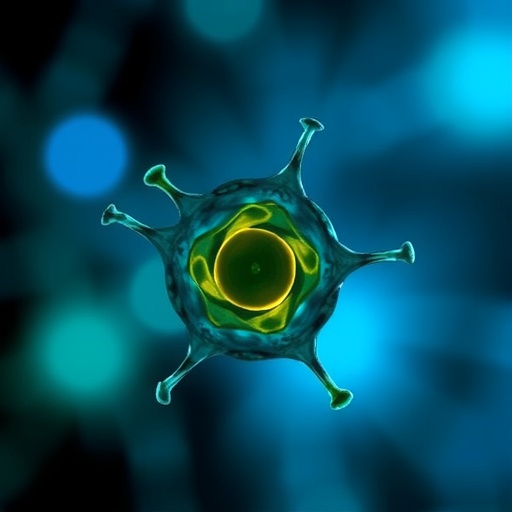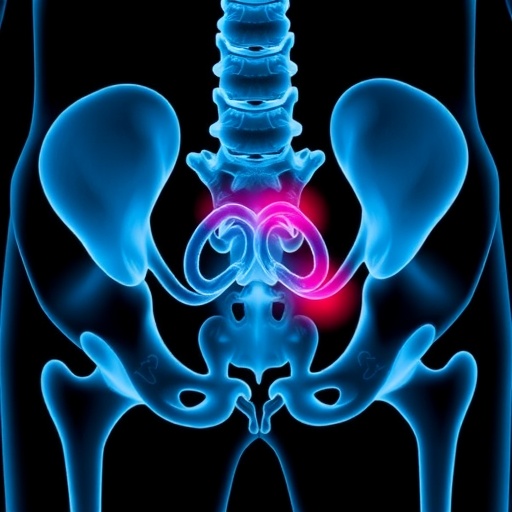In the realm of reproductive medicine, Preimplantation Genetic Testing for Aneuploidy (PGT-A) has emerged as a pivotal advancement, particularly for patients grappling with recurrent pregnancy loss (RPL). A recent investigation conducted by Liao et al. has delved into the intricate dynamics surrounding the number of blastocysts required to maximize the efficacy of PGT-A in patients with a history of RPL. This compelling study encompasses a meticulous retrospective cohort analysis spanning seven years, offering fresh insights into a topic that has ignited considerable debate among fertility specialists.
As RPL affects a significant subset of couples trying to conceive, understanding the underlying factors and developing effective intervention strategies is critical. The dilemma regarding the optimal number of blastocysts for genetic testing is central to fine-tuning the success rates of assisted reproductive technologies. Liao and colleagues sought to elucidate this issue, aiming to determine an evidence-based threshold that could improve the chances of successful pregnancies in individuals facing recurrent losses.
The study meticulously detailed the selection criteria for participants, ranging from age to the number of previous miscarriages, aiming to create a homogeneous group for analysis. The study included individuals who had undergone in vitro fertilization (IVF), highlighting the procedural intricacies involved in obtaining viable blastocysts. The researchers emphasized the crucial role of high-quality embryos in both the PGT-A process and in the overall success of pregnancy outcomes. Thus, the analysis focused on the characteristics that define a “viable” blastocyst, underscoring the significance of morphological assessments.
In examining the outcomes of PGT-A, the authors highlighted the potential advantages of comprehensive chromosome screening. By identifying genetic abnormalities prior to embryo transfer, clinicians can improve the probability of implantation and reduce the risk of miscarriage. This aspect is especially pertinent for RPL patients, who may experience heightened anxiety and emotional distress associated with recurrent losses. Liao et al. posited that by optimizing the number of embryos screened, fertility experts can potentially enhance the psychological well-being of patients, providing them with a more structured and hopeful approach to family building.
The data collected over the seven-year period presented a robust statistical framework, enabling the researchers to analyze trends and outcomes with a high degree of precision. With a significant cohort of RPL patients throughout the study, the findings revealed a nuanced relationship between the number of blastocysts analyzed and successful implantation rates. The conclusions drawn from this data will likely have profound implications for clinical practice, reshaping how reproductive endocrinologists approach cases characterized by RPL.
The authors also tackled the potential drawbacks of extensive genetic testing, including the emotional and financial implications tied to undergoing multiple IVF cycles. While PGT-A presents considerable benefits, the associated stress of repeated failures and the financial burden of treatments can weigh heavily on patients. Thus, Liao et al. advocated for a balanced perspective, urging both clinicians and patients to engage in informed discussions regarding the number of embryos to be subjected to genetic testing.
In digesting the findings, reproductive specialists are encouraged to assess individual patient circumstances meticulously. This personalized approach is crucial, as not all RPL patients will respond similarly to IVF and PGT-A protocols. The study not only provided statistical data but also invoked a broader discourse on the ethical considerations inherent in fertility treatments. The question of how many blastocysts to choose for testing goes beyond mere numbers; it encompasses the holistic well-being of patients striving for a successful pregnancy.
Another salient aspect of the findings was the need for ongoing education and research in the field of reproductive genetics. With advancements rapidly transforming the landscape of fertility treatments, staying abreast of the latest evidence is paramount for practitioners. The study by Liao et al. not only contributes to the existing body of knowledge but also serves as a catalyst for further investigations aimed at refining treatment protocols for RPL patients.
In addition to the clinical implications, this research also highlights the significance of multidisciplinary collaboration among reproductive endocrinologists, geneticists, and mental health professionals. As the emotional impact of RPL can be profound, integrating psychological support into treatment plans is crucial. This holistic strategy can provide the emotional scaffolding necessary for couples navigating the tumultuous journey of recurrent loss, making the pursuit of parenthood more manageable and hopeful.
In conclusion, the study undertaken by Liao et al. is a significant contribution to the field of reproductive science, particularly in understanding the nuances of blastocyst selection for genetic testing in RPL patients. As this vital area of research continues to evolve, it will undoubtedly influence clinical practices and improve the experiences of countless individuals striving for parenthood. By fostering a climate of informed decision-making, compassion, and innovation, the medical community can pave the way for more successful outcomes and enhanced psychological well-being for patients encountering the challenges of recurrent pregnancy loss.
With ongoing developments and persistent inquiry in reproductive medicine, it remains crucial to cultivate awareness and knowledge surrounding PGT-A and its applications. The emotional, physical, and financial investments made by patients seeking assistance underscore the gravity of this topic, as the quest for effective interventions continues. The future of reproductive health hinges upon research such as this, further illuminating the complex relationship between genetics and pregnancy success.
As we reflect on the implications of Liao et al.’s findings, the importance of patient-centered care cannot be overstated. Each individual’s journey through fertility treatments is unique, and practitioners must remain attuned to the diverse needs of their patients. Ultimately, the study serves as a beacon of hope and direction, aiming to refine approaches to support RPL patients on their path to achieving healthy pregnancies.
Subject of Research: The impact of the number of blastocysts analyzed by Preimplantation Genetic Testing for Aneuploidy (PGT-A) on outcomes for recurrent pregnancy loss (RPL) patients.
Article Title: How Many Blastocysts Are Needed for PGT-A to Benefit RPL Patients? A 7-Year Retrospective Cohort Study.
Article References:
Liao, J., Zhu, S., Wang, J. et al. How Many Blastocysts Are Needed for PGT-A to Benefit RPL Patients? A 7-Year Retrospective Cohort Study.
Reprod. Sci. (2025). https://doi.org/10.1007/s43032-025-01978-5
Image Credits: AI Generated
DOI: 10.1007/s43032-025-01978-5
Keywords: Preimplantation Genetic Testing for Aneuploidy, recurrent pregnancy loss, IVF, blastocysts, reproductive medicine.
Tags: blastocyst selection criteria in fertility treatmentsevidence-based fertility interventionsimpact of age on fertility and PGT-Ainsights from Liao et al. study on PGTIVF success rates and genetic testingmaximizing assisted reproductive technology outcomesoptimal blastocyst count for PGT-APreimplantation Genetic Testing for Aneuploidyrecurrent pregnancy loss and fertilityretrospective cohort analysis in reproductive medicinerole of genetic testing in recurrent miscarriagestrategies for improving pregnancy success in RPL patients






